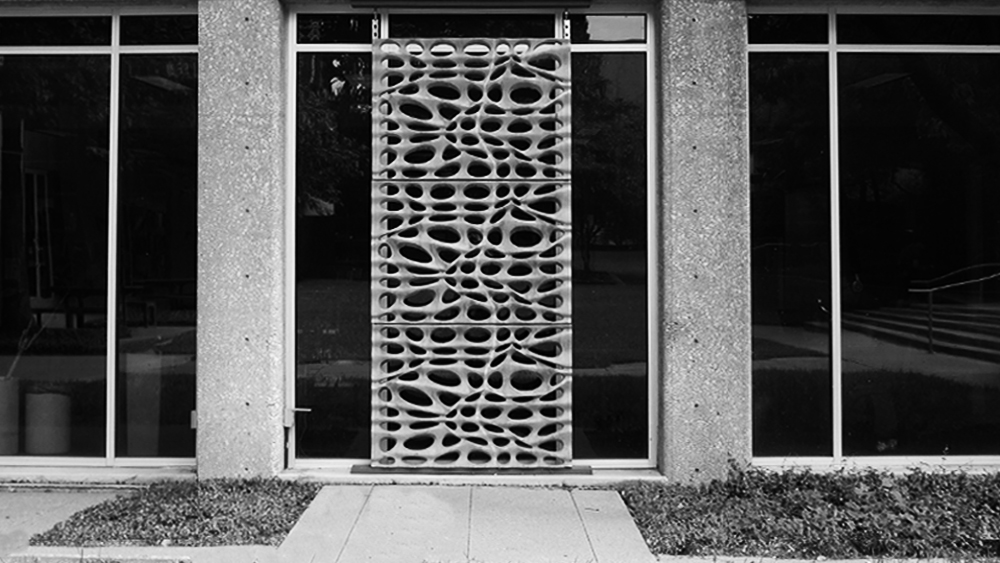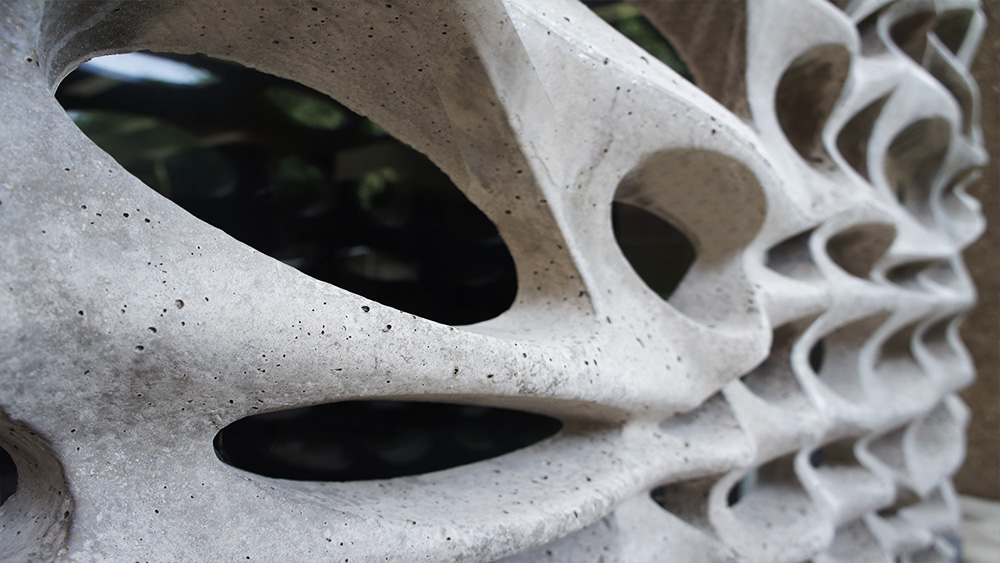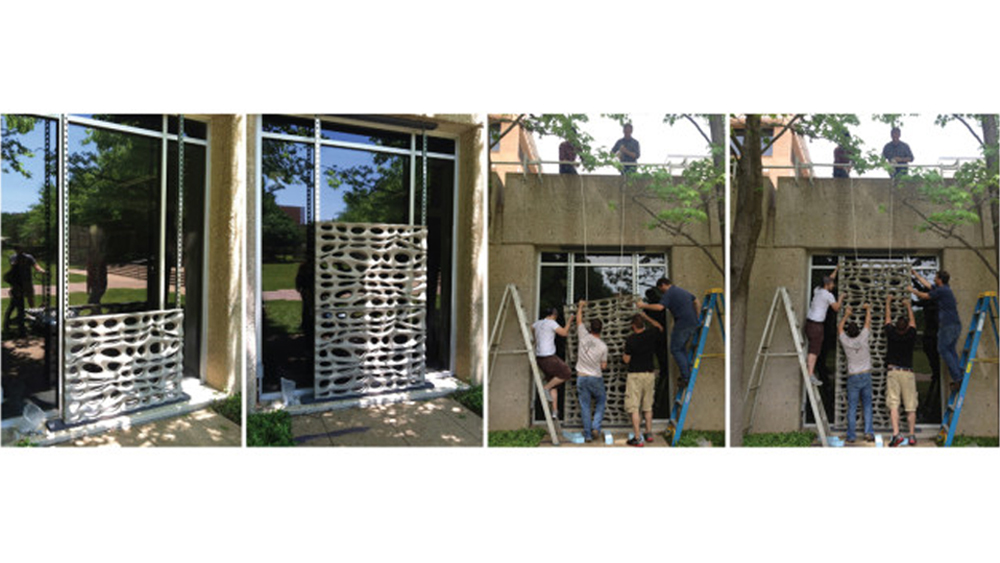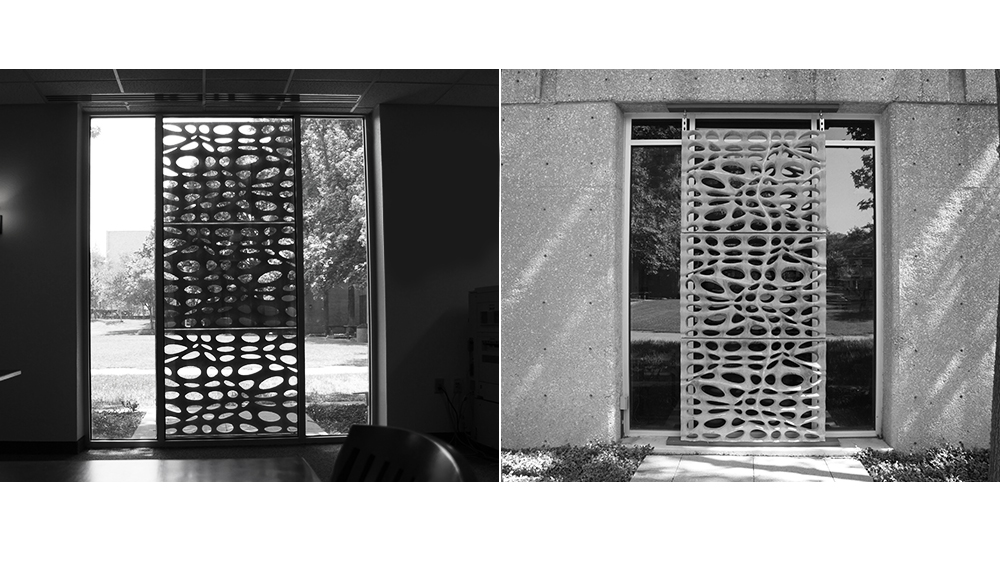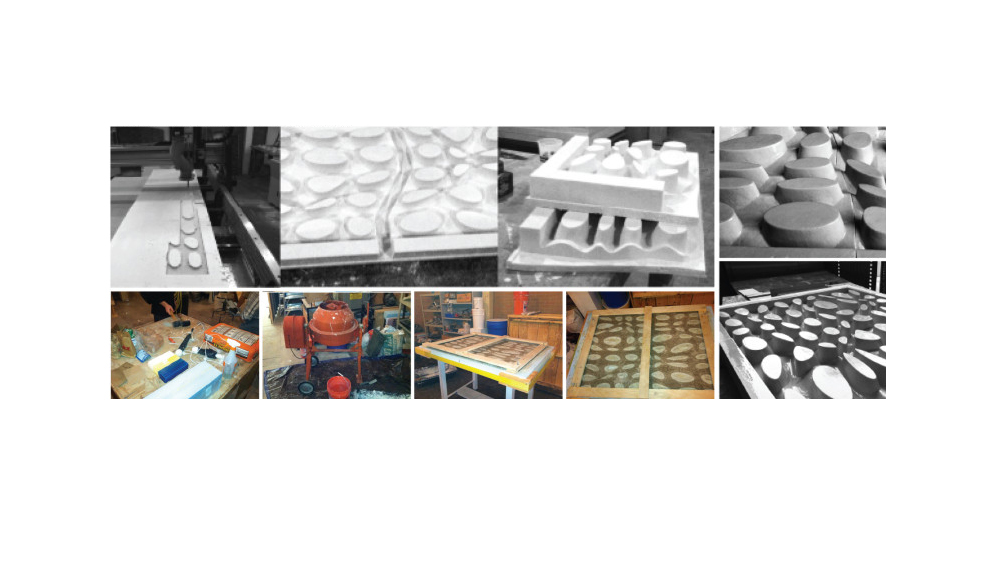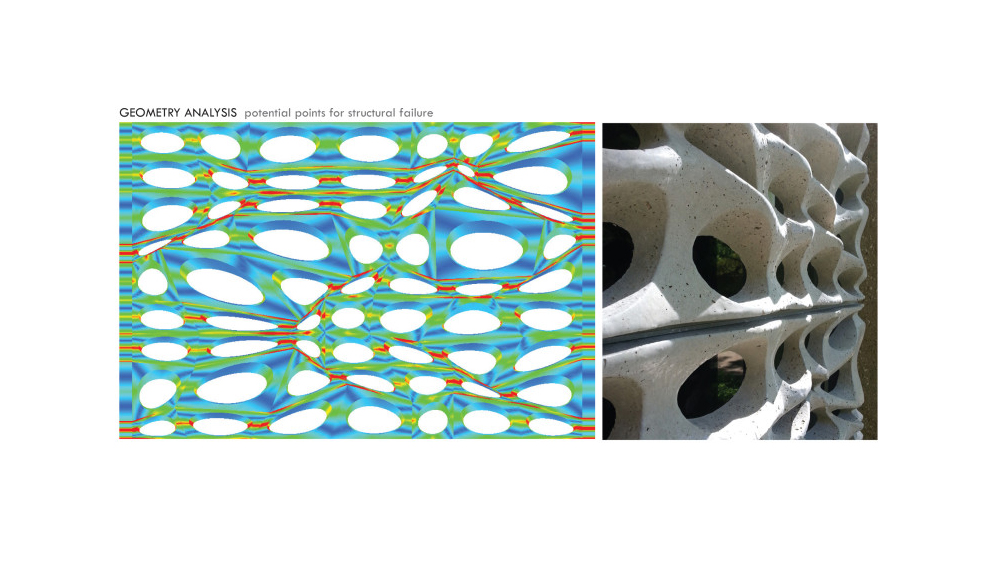NON-EUCLIDEAN CASTING GEOMETRIES I
Non-Euclidean Casting Geometries I examines the use of a non-uniform grid to produce an optimized brise soleil. Initial investigation into the module geometry parameterizes dimensions of 3”x 8” in depth with a min/max depth of 5° to 30° for mold release and an internal angle of incident of 33° and 77° to account for the winter and summer sun respectively. By creating a flat cast back surface, a repetitive 35”x50”x3” panel is cast to create the over-all brise soleil surface. Mounted 6” away from the existing glass surface, the panels provide shade during the summer months while still providing visual access through the surface from inside the space out into the courtyard.
This initial project served as an important point of departure, not only for what it established as preliminary interests in repetitive casting and non-Euclidean geometries, but also for how the project failed. The panels were highly susceptible to breaking without proper internal reinforcement in the areas highlighted in the FEA. Placing reinforcement in the shuffled grid proved to be very challenging. As a result, this raised a much larger question about how non-Euclidean, or at least, non-standard porosity could be reinforced. Subsequent research lead to examining methods for introducing new forms of internal reinforcement.
Team Members
Austin Ede
Khang Nguyen
Related Projects
Non-Euclidean Casting Geometries II

